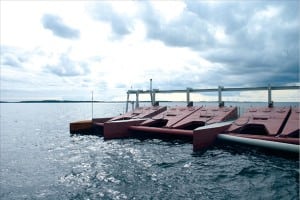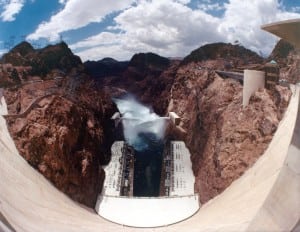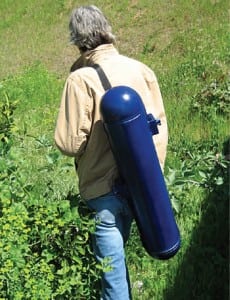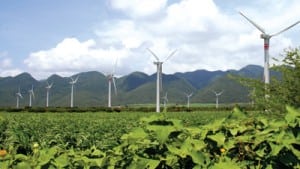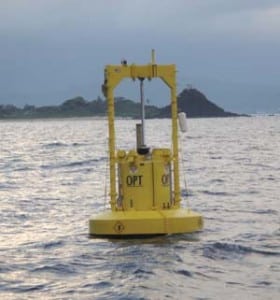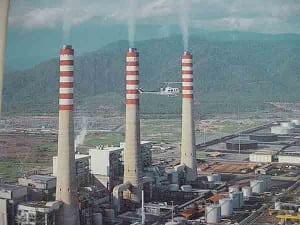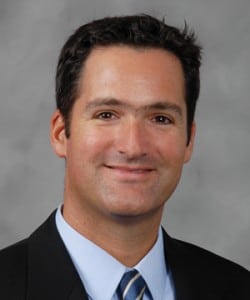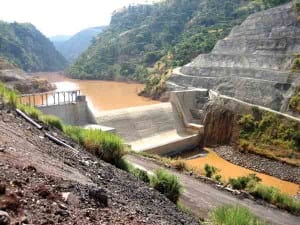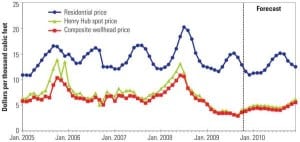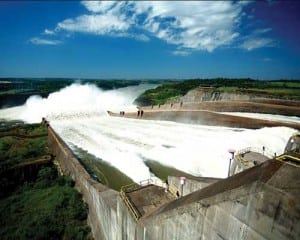Hydro
-
Hydro
Integrating Wave and Wind Power
While Europe’s offshore wind sector has taken off, interest is resurging in marine energy. The UK’s Crown Estate took the major step this March, for example, of awarding leasing rights to 10 wave power projects to develop generation in Scotland’s Pentland Firth and Orkney waters of the North Sea.
-
Hydro
Hoover Dam Contracts for Low-Water Hydroelectric Turbine
Growing water demand and reduced runoff due to drought has depleted waters feeding many hydroelectric power plants around the world—sometimes causing severe power shortages, such as in Brazil and New Zealand. The 2,080-MW Hoover Dam (Figure 4), a facility that generates power for more than a million people in Arizona, Nevada, and Southern California, is not immune to this phenomenon. According to a recent study by the Scripps Institution of Oceanography, the Colorado River system, which includes Lake Powell and Lake Mead (both manmade reservoirs), is suffering a net deficit of nearly one million acre-feet of water per year.
-
Hydro
The Backpack Power Plant
Soldiers could one day carry 600-W power plants on their backs, or set up arrays of up to 20 kW in streams deeper than 4 feet, if a prototype being developed by California-based Bourne Energy comes to fruition.
-
Hydro
Power in Mexico: Renewables Remain More Desired than Real
Mexico has already developed substantial large hydro and geothermal resources. However, without policy changes and government-sponsored financial incentives, unconventional renewable sources are taking the equivalent of baby steps.
-
Hydro
Marines Get Power from Waves
Ocean Power Technologies Inc. (OPT) announced on Feb. 1 that it had successfully deployed one of its PowerBuoy wave energy devices about a mile offshore from a U.S. Marine Corps Base on the island of Oahu in Hawaii. The device generates up to 40 kW of power from the rise and fall of waves, and since its deployment in December 2009, it has been generating power within specifications.
-
O&M
Venezuela’s Power System on Brink of Collapse
Venezuela, a country that relies on hydropower for almost three-quarters of its electricity, has been battling a deepening electricity crisis since a drought in 2009 and a sudden 7% surge in demand brought the country’s power system to the brink of collapse.
-
Hydro
Peru: The Potential to Become a Regional Energy Hub
Water and gas provide the energy for Peru’s power generation sector, and the country could generate considerably more, especially from hydro and wind. While the nation strives to extend electricity service to all its citizens, it’s also looking beyond its borders for potential future customers.
-
Hydro
Ethiopia’s New Hydro Plant Boosts Region’s Generating Capacity
Ethiopia in mid-January officially inaugurated the 420-MW Gilgel Gibe II hydropower project, the second hydropower plant to be opened since November 2009, when the 300-MW Tekezé project began operations.
-
O&M
The U.S. Gas Rebound
"It’s déjà vu all over again," said Yogi Berra. The Hall of Fame catcher could easily have been predicting the coming resurgence of natural gas – fired generation. Yes, a few more coal plants will be completed this year, but don’t expect any new plant announcements. A couple of nuclear plants may actually break ground, but don’t hold your breath. Many more wind turbines will dot the landscape as renewable portfolio standards dictate resource planning, but their peak generation contribution will be small. The dash for gas in the U.S. has begun, again.
-
Coal
Brazil: Latin America’s Beacon
With the eighth-largest economy in the world, Brazil has a clear need for power, but balancing supply and demand has proven tricky in recent decades. Even in a country where over 80% of generation capacity comes from renewables, planning for future capacity additions isn’t straightforward or easy.

